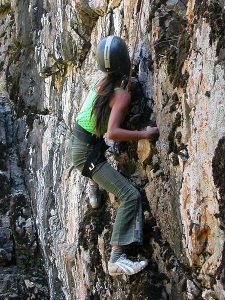Apr 15, 2020
We all face the situation of COVID-19 just now and for many of us, it means that our only chance to see friends and family is through online interaction. We miss face-to-face contact and await the time when it is again an option for us. But one result of this time will be that we all become more aware of how much we can interact online, and that will also influence our roles as learning providers.
My experience is that in some situations online interaction can actually be more beneficial, and I want to share that in this post. My own situation was where anxious feelings that are known to inhibit learning pre-existed between those meeting. An example of this is from studies conducted in Israel among secular and Orthodox Jews and Arab Muslim students, all doing the same study course but at segregated colleges, with identity cues such as physical appearances, names and locations likely to confirm stereotypes. Digital media was used to initially hide these, and then to slowly reveal them by using different media as relationships build over time. These started with messaging and chat forums and built to audio only or audio and picture, and then eventually, face-to-face contact.
My own delve into this has been in faiths and cultures awareness training in Southall in London, an area known as “Little India” due to its mix of faith traditions there. For groups coming for training, entering unfamiliar places of worship can be a full-on sensory experience, and so raise anxieties, in some cases exacerbated by inherited preconceptions or by what is imbibed through news media. But digital training beforehand can help those coming by letting them interact with content about Southall to examine aspects that are likely to raise anxiety.
Again, appropriate digital media can be selected in stages with suitable scaffolding activities included at each stage, and all this occurring with much less sensory input than when entering the faith centres themselves! This helps participants to then be better prepared for the visits, and so to be more open for learning to occur.
 Of course, examining preconceptions works well in face-to-face contexts too! One classic example of the need for this is when a group of students surmised that winter was colder because the Earth was further away from the Sun then, possibly influenced by 2-dimensional portrayals of the Earth’s orbit in school geography books. Yet each had the ability to correct this misconception just by asking why it was that when it was winter in one part of the world, at the same time it would be summer in another. Asking powerful questions like this can reveal knowledge that doesn’t fit with current ways of thinking and so requires them to be re-examined. We all need to work at examining our preconceptions, and asking powerful questions is an important way to do this in learning contexts.
Of course, examining preconceptions works well in face-to-face contexts too! One classic example of the need for this is when a group of students surmised that winter was colder because the Earth was further away from the Sun then, possibly influenced by 2-dimensional portrayals of the Earth’s orbit in school geography books. Yet each had the ability to correct this misconception just by asking why it was that when it was winter in one part of the world, at the same time it would be summer in another. Asking powerful questions like this can reveal knowledge that doesn’t fit with current ways of thinking and so requires them to be re-examined. We all need to work at examining our preconceptions, and asking powerful questions is an important way to do this in learning contexts.
But extra advantages can come for learners when examining preconceptions in digital environments, namely, to provide a place of liminality: a place for learners to transition between old and new ways of thinking. You will have gone through a place like this yourself in your teenage years in learning how to move from childhood to adulthood thinking! But there are particular time and space advantages in providing this place for learning events online:
- Time is often needed because learners can oscillate for a while between old and new ways of thinking. This is even more so when learning doesn’t just mean new knowledge but can affect emotions too, making it harder to let go of the old way. You may recall the time as a child when someone told you the truth about Santa Claus! A digital environment facilitates this learning in stages over time, with scaffolding along the way to help learners negotiate the liminal state. Well-chosen media can again aid this process to reduce emotive impact.

- Digital environments also give space for working through the liminal state. This can be considered by thinking of learning being like rock climbing: staying put means keeping our four extremities (both arms and legs) on the rock face, whereas good change means keeping three there and finding a safe spot for the other one. Face-to-face learning can mean many changes for learners – not just new knowledge but maybe also new location and people – which can make it harder for them to process the new knowledge, especially so for shorter courses and for quieter learners. Digital learning by contrast can be embarked on in a familiar place with familiar people, meaning that the only change is the learning change and so improving prospects of transition.
Digital learning need not be technically complex to implement – at its simplest it can mean a group email or conference call or messaging within a social media group. Ask yourself then about your learning event:
- Which parts of your event will require changes in ways of thinking that may be hard for learners?
- How could learners be better prepared for this through digital interaction beforehand?
* * * * * *
Peter Tate is provides training for businesses, government workers, third level colleges and church connected groups, specializing particularly in faiths and cultures awareness. He is educated to Masters-level in Digital Education (applying current thinking in adult learning to digital contexts) and in Cross-Cultural Theology (helping faiths to be contextual within their situations). Peter worked as UK Coordinator of Learning that LASTS for nine years, a training-the-trainers workshop developed by Wycliffe Bible Translators and endorsed by Jane Vella. He has used his experience from these to develop digital and classroom training, including financial management, team building skills and making technical software teachable to non-technical people. Peter is a GLP Certified Dialogue Education Practitioner (CDEP), based in London providing consultancy as Brainy Training Solutions.
More GLP blog posts by this author can be found here.
Other GLP blogs about virtual learning:
- 6 Core Principles, Virtually!
- Five Ways to Create Tough and Engaging Online Team Tasks
- Three Things Seasoned Facilitators Can Learning From E-Facilitation
Photo Credits:
Photo #1: https://commons.wikimedia.org/wiki/File:Southall_station_welcome_signage.JPG
Photo #2: https://wiki.usask.ca/pages/viewpage.action?pageId=1310818396
Photo #3: https://commons.wikimedia.org/wiki/File:Rock_climbing.jpg



